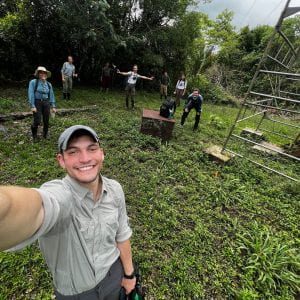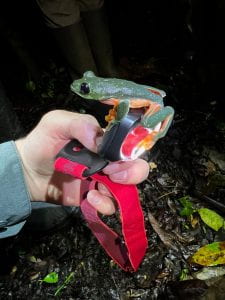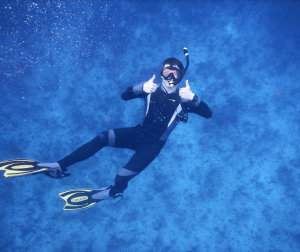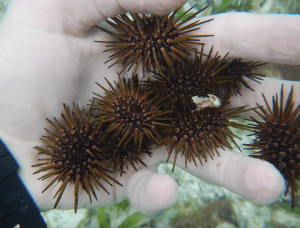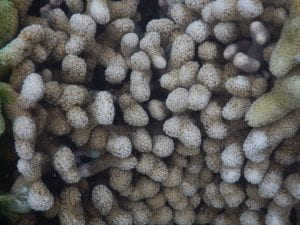The past two weeks have felt like some of the longest days of my life, but I can not believe that BIOS 319 is over already. It was truly amazing to experience nature in these tropical environments in full force. I had never been so south before, so it was interesting to witness the latitudinal diversity gradient up close. The biodiversity that we observed in the field was unrivaled by anything I had seen before. The combination of intense, somewhat regular tropical sunlight and abundant rainfall has cultivated impressive biodiversity in both the reef and forest ecosystems. Further, the similarities in both ecosystems also stem from their biogeohistory. The bedrock of the forest is mostly limestone, making the soil pretty nutrient-poor, and leading to a variety of ecosystem adaptations to account for this. We saw the soil horizon on our drive to the forest, and there wasn’t much topsoil. We saw the buttress roots of trees that couldn’t go any deeper because of the bedrock, and we learned about different methods of quick nutrient cycling in the forest, like through nitrogen-fixing epiphytes. This is connected to the reef. With my taxon being hard corals, it was really interesting to learn about the calcium carbonate skeletons that hard corals create, and then to see them as calcified fossils in the coral graveyard. It’s amazing to think how these calcified fossils are what led to the limestone bedrock over millions of years. We also saw methods of quick nutrient cycling in the reef, like the constant feeding and pooping of the parrotfish. In contrast, we also learned and saw a lot of differences between the two ecosystems. For one, the weather it was so windy on the atoll, but in the forest, there was just heat without a breeze. Because of this, I think the days in the forest seemed much longer than the ones on the atoll. While I would’ve expected to experience more bugs in the forest, they actually weren’t as much of a problem compared to the atoll. In the forest, my biggest issues with bugs were huge insects like cockroaches and katydids wanting to spontaneously fly at my face or join me in the shower, but I never got bitten. On the other hand, in the atoll, our insect problem was sandflies. They are so tiny that you can hardly see them, but boy, do they bite. Just a few minutes in the sand around sunset, and I would have dozens of bites.
I honestly thought that living “off the grid” would be more challenging for me, but it wasn’t too bad. The limited access to technology didn’t bother me as much as I had anticipated, and I actually enjoyed the break from screens. I knew that I would be dirty, but oh my gosh, I couldn’t have anticipated how filthy I would be every day. I never felt truly clean while on the trip, so the first shower when I got home really hit.
Overall, my favorite thing about the trip was the ATM cave. I love seeing how biology, geology, and history interact with each other in these caves. I definitely think I could have spent hours exploring the cave, and it was so interesting to hear from our tour guide, who specializes in studying Belize caves. Especially because my family is descended from the Maya, it was really interesting to hear about their culture and relationship with the environment. I think it is so cool how they thought caves were doors to the underworld and worshipped and made sacrifices to the rain and corn gods there.
My least favorite thing was definitely when we had to go off the trail to place our camera traps. The first few times were fun, but after a while, the heat started to get to be and I felt drenched in sweat and I was nervous the whole time that a snake would pop out, out of nowhere.
I definitely learned a lot on this trip, but the three most important things were:
- How coral polyps function as a colony and almost like one giant organism.
- How plant and insect species coevolve together over millions of years to become extremely specialized and depend on one another.
- Even a small pilot study with a limited sample size can help guide further studies in the right direction and offer some insight into general trends.


















